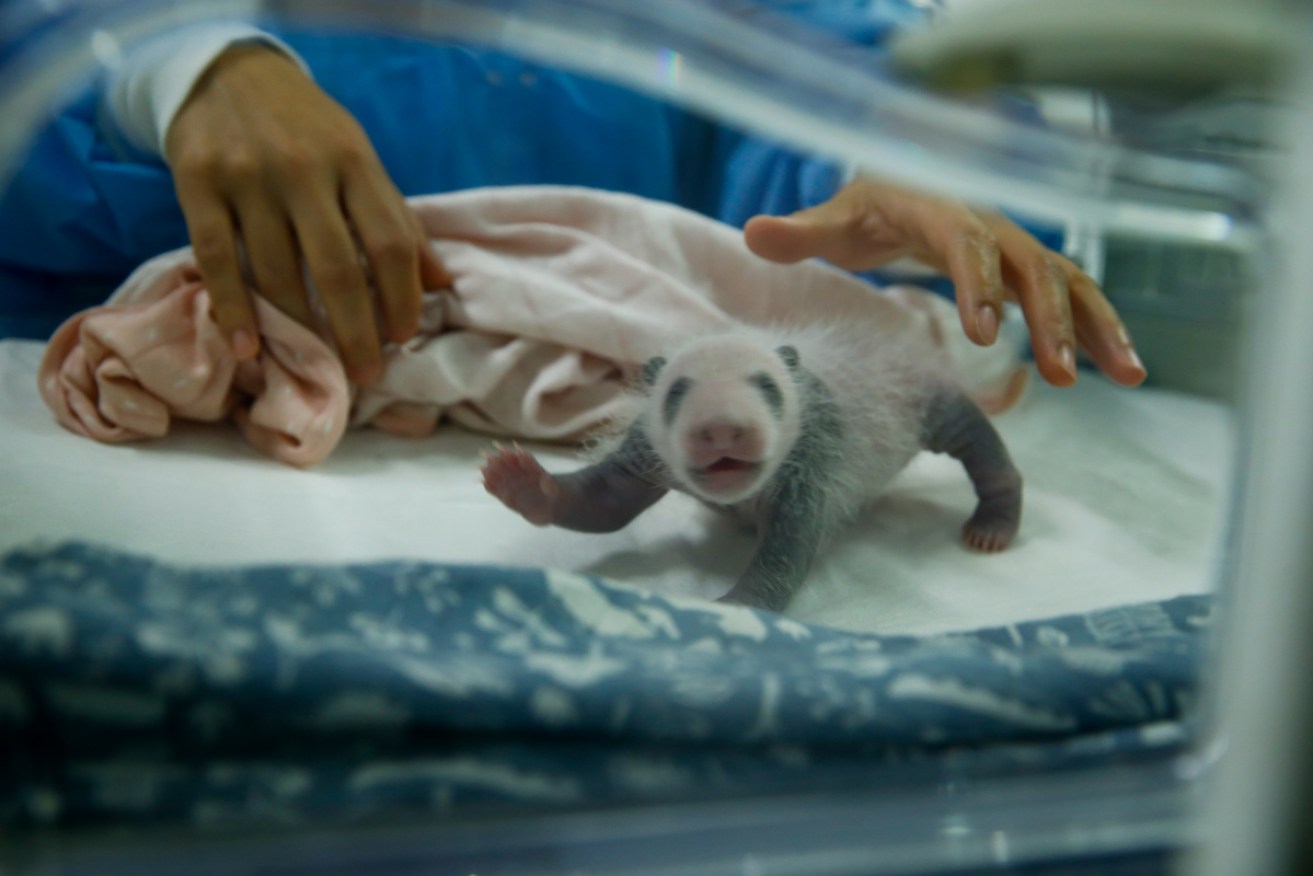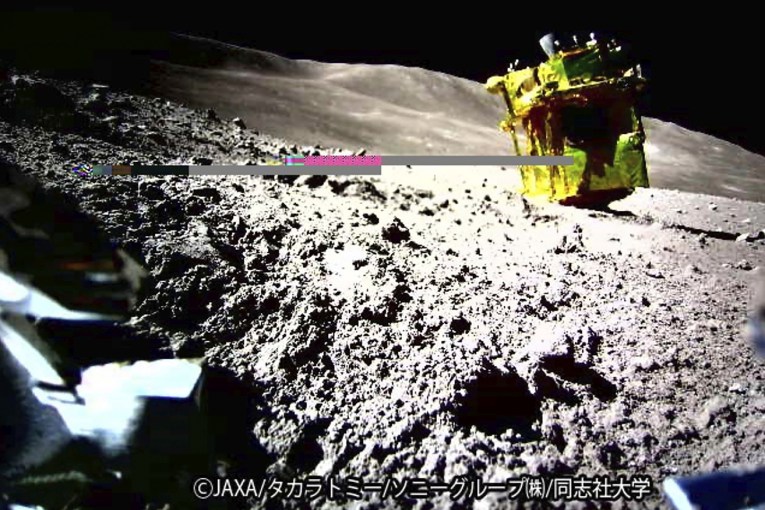Why are baby pandas born so tiny? There goes one theory, down for the count


This little fellow was the weight of two cooked sausages when he was born. Photo: Getty
The next time you have two cooked sausages side by side on your plate, consider this: they weigh as much as a newborn panda, about 100 grams.
The baby’s mother weighs up to 100 kilograms, a thousand times heavier than her offspring.
Such a difference in size between a newborn and a mother is very rare. Kangaroo joeys are born after only 30 days in the womb, emerge blind, hairless, and bean-sized: about two-centimetres long and developmentally immature.
For kangaroos, the routine prematurity of their offspring allows the mother to be carrying up to three babies at a time, each in different stages. “Baby-making machines,” headlined a story from the Earth Touch News Network.
So what about pandas?
Their babies are born similarly helpless, tiny and almost foetus-like as marsupials. But as researchers from Duke University explain it, “all bears have disproportionately small babies” – and pandas sit on the extreme end of a continuum.
Duke biology professor Kathleen Smith said a newborn polar bear’s birthweight was a fraction of their mother’s 1:400, or less than one-half of one per cent of her body mass. For the vast majority of baby mammals, including humans, the average is closer to 1:26.
Dr Smith and her former student, Ms Peishu Li, in a new paper, investigate the idea that bears give birth to significantly small babies as a survival strategy for when pregnancy overlaps with winter hibernation.
Pregnant females don’t eat or drink during this time, relying mostly on their fat reserves to survive, but also breaking down muscle to supply protein to the foetus.
The thinking is that, energetically, females can only afford to nourish their babies this way for so long before this tissue breakdown threatens their health.
By cutting pregnancy short and giving birth to small, immature babies, bears would shift more of their offsprings’ growth to outside the womb, where cubs can live off their mother’s fat-rich milk instead of depleting her muscles.
Proponents of the theory concede that not all bears – including pandas – hibernate during the winter. But the idea is that small birthweight is a fixed trait in the bear family tree, preventing non-hibernating relatives from evolving bigger babies too.
“It’s certainly an appealing hypothesis,” Dr Smith said.
How to test this hypothesis
As a baby animal grows and develops inside the womb, its bones and teeth do, too. If the hibernation theory was correct there should be significant differences in bone growth between hibernating bears and their counterparts that stay active year-round and don’t fast during pregnancy.
The researchers took micro-CT scans of two baby panda skeletons, along with newborn grizzlies, sloth bears, polar bears, dogs, a fox, and other closely related animals from the collections of Smithsonian National Museum of Natural History and the North Carolina State College of Veterinary Medicine.
They used the scans to create 3D digital models of each baby’s bony interior at birth. The researchers examined the degree of ossification, or how much the skeleton has formed by the time of birth. They looked at whether the teeth had started to calcify or erupt, and the degree of fusion between the bony plates that make up the skull.
They found that despite being small, most bear skeletons are just as mature at birth as their close animal cousins.
But the panda bear is the one exception to this rule. Even in a full-term baby panda, the bones look a lot like those of a beagle puppy delivered several weeks premature.
“That would be like a 28-week human foetus” at the beginning of the third trimester, Dr Smith said.
So what makes pandas so different?
Some researchers blame the bamboo-only diet on why cubs are born so small, but there isn’t enough data to test this idea.
The Duke researchers suggest the panda bear’s embryonic appearance is likely has to do with “a quirk” of panda pregnancy.
Dr Smith said all bears experience what’s called “delayed implantation”. After the egg is fertilised, the future foetus enters a state of suspended animation, floating in the womb for several months before implanting in the uterine wall to resume its development and get ready for birth.
But while other bears gestate for two months after implantation, giant pandas are done in a month.
“They’re basically undercooked,” said Ms Li, now a PhD student at the University of Chicago.
Dr Smith said: “We really need more information about their ecology and reproduction in the wild.”
We may not have much time given the panda’s risk of extinction. If they were to die out, the mystery would likely become set in stone.








